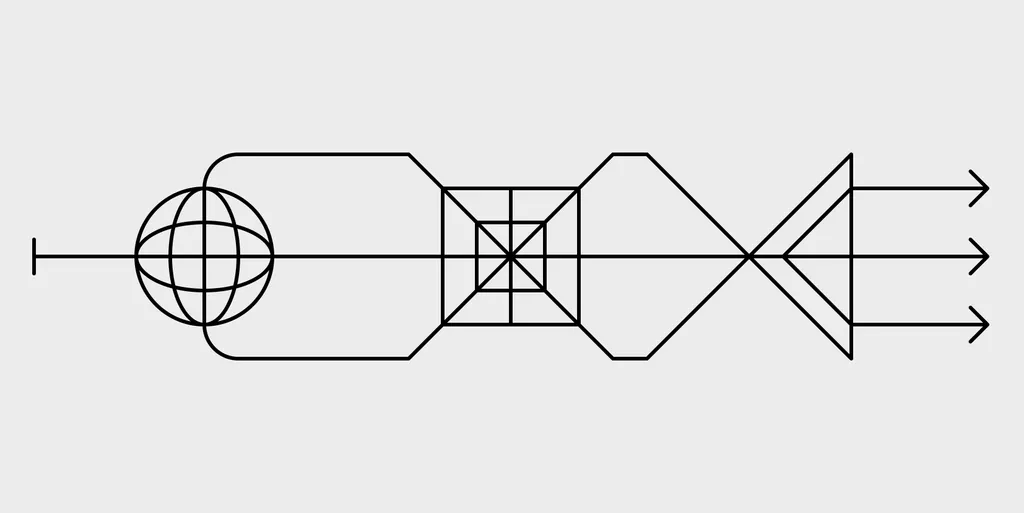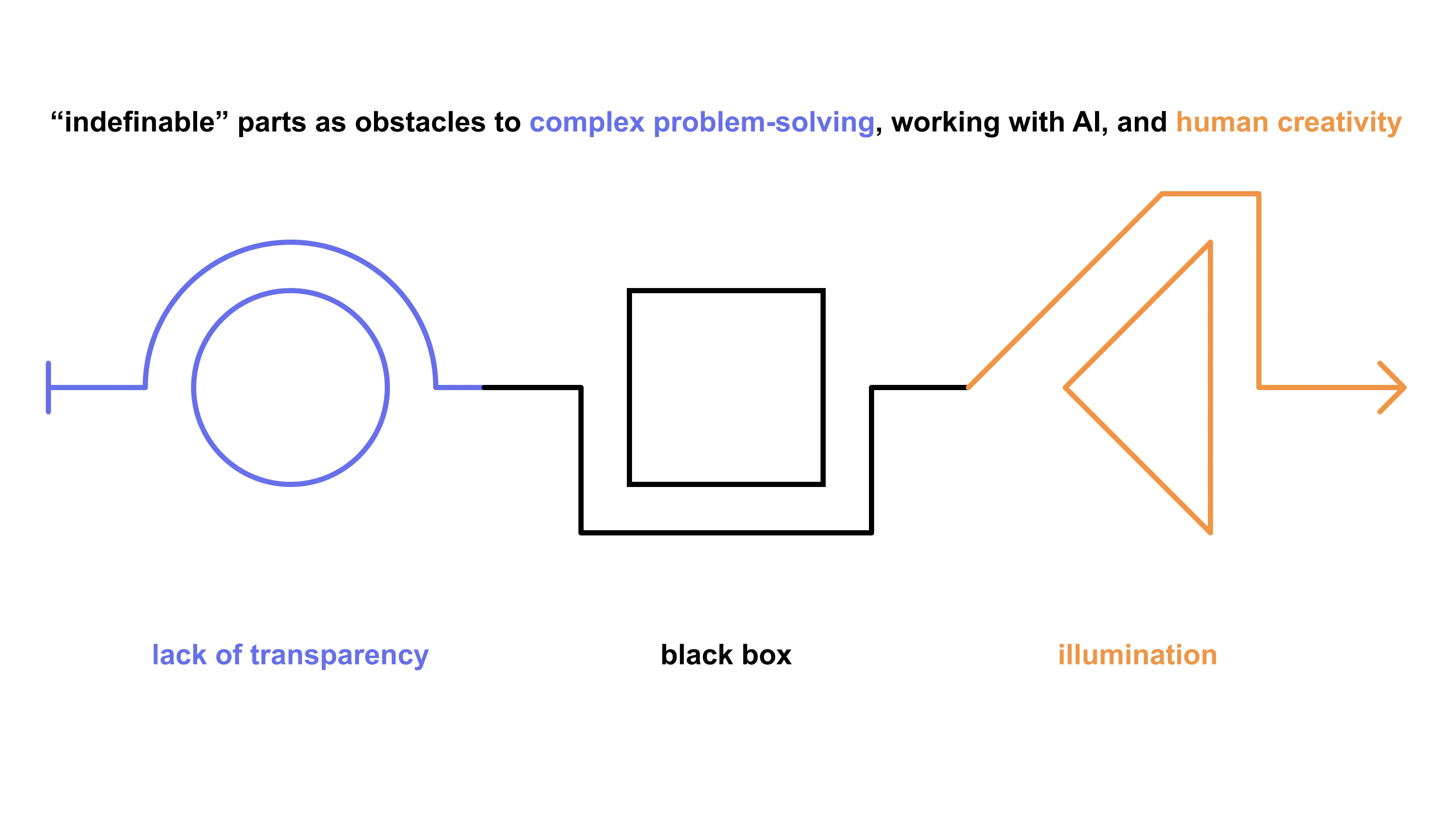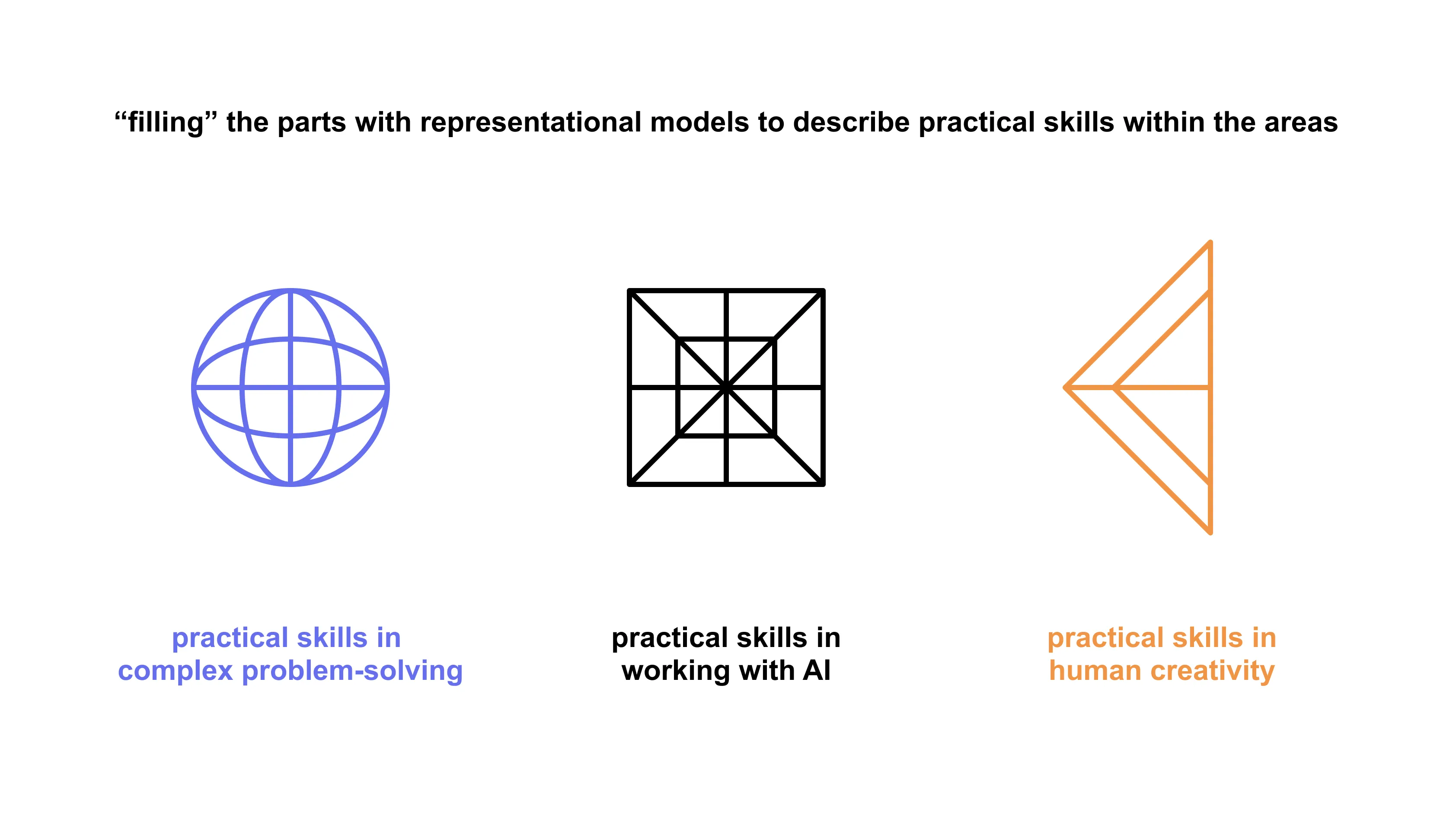The “effect method” and representational models

Bachelor Thesis by Moritz Hartstang (in BA Product Design)
Learning practical skills in complex problem-solving, working with artificial intelligence, and human creativity is increasingly important. At the same time, these areas are increasingly important as practical parts of teaching. However, there are significant gaps in our theoretical knowledge of them. Complex problems, artificial intelligence, and human creativity are terming whose indefinability is often part of their current definition. The “lack of transparency” as part of complex problems, the “black box” as part of artificial intelligence, and the “illumination” as part of human creativity. So, how can we teach practical skills in these areas and use them in teaching, even though we lack theoretical knowledge on how complex problems, artificial intelligence, and human creativity function?

Building on different theoretical knowledge and testing, we can create representational models to describe practical skills in an area without the need for a complete theoretical understanding of it. As a result, these skills can already be learned and used for teaching, even though some parts of the areas are still seen as theoretically indefinable. In addition, representational models can be the starting point for growing theoretical knowledge by inferring theory from practice, thus counteracting indefinability. Furthermore, it enables students to learn about theory while engaging in practical skills.

The “effect method,” developed in the Bachelor Thesis by Moritz Hartstang, is a representational model that describes a practical skill of solving complex problems creatively. Students can identify clear problems and solution approaches within “intransparent” complex systems through structured research questions for search engines based on large language models. The method empowers students to identify and understand relevant problems and solution approaches by researching defined interrelations between subjects (terms considered as single entities) and systems (terms considered as multipart entities). The interrelations are defined by effects to be prevented (problem) or achieved (solution). Based on this, the effect method enables the development of system-compatible solution concepts. As a result, each student’s creativity, knowledge, and best abilities can contribute to the collaborative development of relevant solutions.

At the same time, they learn the necessary knowledge for the subsequent collaborative development of creative solution concepts as well as practical skills in working with artificial intelligence. The effect method shows how representational models can enable the necessary implementation of complex problem-solving, artificial intelligence, and creativity in education and thus fundamentally improve it.
The corresponding paper, which was enabled by generous support from the Institute of Applied Research (IAF), will be published this summer in the renowned MIT Press journal “Design Issues.”

